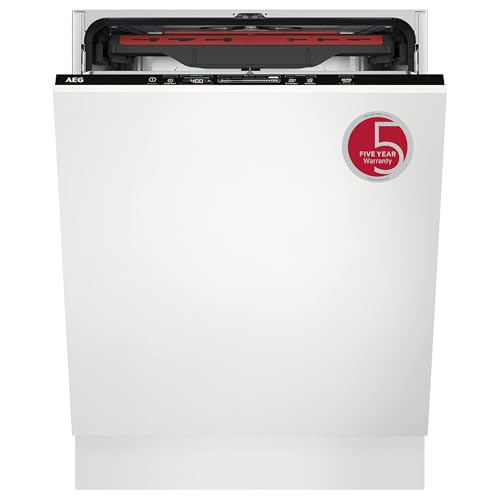




Welcome to YourSiteName’s comprehensive guide on how to clean brass! Brass is a beautiful and versatile metal that is commonly used in home decor, musical instruments, and various household items. However, over time, brass can tarnish and lose its shine. In this article, we will share easy techniques and tips to help you restore the luster of your brass pieces.
Why does brass tarnish?
Brass tarnishes due to oxidation, a chemical reaction that occurs when brass interacts with air and moisture. This causes the surface of the brass to darken and develop a patina. While some people prefer the aged look of tarnished brass, others may want to maintain the original shine. Fortunately, there are several methods you can use to clean and restore brass to its former glory.
Techniques for cleaning brass
1. Using a mixture of vinegar and salt: This is a simple and effective technique for removing tarnish from brass. Mix equal parts of white vinegar and table salt to create a paste. Apply the paste to the tarnished brass and let it sit for a few minutes. Then, scrub the brass with a soft cloth or toothbrush. Rinse the brass with water and dry it thoroughly.
2. Using lemon juice and baking soda: Lemon juice is a natural acid that can help remove tarnish from brass. Mix lemon juice and baking soda to create a paste. Apply the paste to the brass and let it sit for a few minutes. Scrub the brass gently and rinse it with water. Dry the brass thoroughly to prevent new tarnish from forming.
Pro tip: Before using any cleaning method, test it on a small, inconspicuous area of the brass to ensure it doesn’t cause any damage.
Top RatedMetal Polish Twin Pack for All MetalsUltimate shine for aluminium and brass.This polishing pack includes both Original and High Shine Metal Polishes, effectively removing grime while restoring shine to metals. It also comes with application and microfiber cloths for a flawless finish.
Tips for maintaining brass
1. Regular dusting: Dusting your brass items regularly can help prevent tarnish from building up. Use a soft cloth or a feather duster to gently remove dust and debris from the surface of the brass.
2. Avoid harsh chemicals: Avoid using harsh chemicals or abrasive cleaners on brass, as they can damage the surface. Stick to mild cleaning solutions and non-abrasive cloths or brushes.
3. Apply a protective coating: To help prevent tarnish, you can apply a protective coating to the brass. There are various brass lacquers and sealers available on the market that can help maintain the shine and protect the brass from oxidation.
By following these easy techniques and tips, you can keep your brass items looking beautiful and shiny for years to come. Remember to always handle brass with care and avoid excessive rubbing or scrubbing, as it can cause scratches or remove the protective coating. Happy cleaning!
How to Clean Brass: Easy Techniques and Tips YourSiteName

Introduction
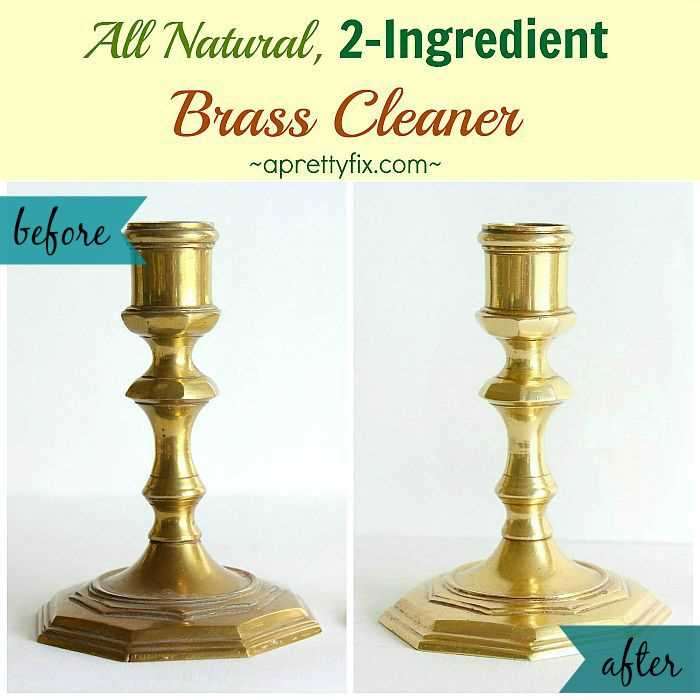
Brass is a popular metal used for various household items and decorative pieces. Over time, brass can tarnish and lose its shine. In this article, we will discuss easy techniques and tips to clean brass and restore its original luster.
Materials Needed
- Lemon juice
- Vinegar
- Baking soda
- Soft cloth
- Microfiber cloth
- Toothbrush
Method 1: Lemon Juice
Lemon juice is an excellent natural cleaner for brass. Here’s how to use it:
- Cut a lemon in half and squeeze out the juice.
- Dip a soft cloth or sponge in the lemon juice.
- Gently rub the brass item with the lemon juice-soaked cloth.
- Rinse the brass item with water and dry it thoroughly with a microfiber cloth.
Method 2: Vinegar and Salt
Vinegar is another effective cleaner for brass, especially when combined with salt. Follow these steps:
- In a bowl, mix equal parts vinegar and salt to form a paste.
- Apply the paste to the brass item, rubbing it in with a soft cloth.
- Let the paste sit on the brass for 10-15 minutes.
- Rinse the brass item with water and dry it thoroughly with a microfiber cloth.
Method 3: Baking Soda and Lemon Juice
If you need to remove stubborn tarnish from brass, a mixture of baking soda and lemon juice can do the trick. Here’s how:
- In a small bowl, mix baking soda and lemon juice to form a paste.
- Apply the paste to the tarnished areas of the brass item.
- Using a toothbrush, gently scrub the tarnished areas.
- Rinse the brass item with water and dry it thoroughly with a microfiber cloth.
Additional Tips
- Always test any cleaning solution on a small, inconspicuous area of the brass before applying it to the entire item.
- Avoid using abrasive cleaners or scrub brushes on brass, as these can scratch the surface.
- Regularly dust and polish your brass items to prevent tarnish buildup.
- Store brass items in a dry place to reduce the risk of tarnish.
Conclusion
With the right techniques and materials, cleaning brass can be a simple and rewarding task. By following the methods outlined in this article, you can easily restore the shine and beauty of your brass items.
The Importance of Cleaning Brass

Brass is a popular material used in various household items, including decorative pieces, utensils, and fittings. It is a durable metal that adds elegance and charm to any space. However, over time, brass can lose its shine and develop a tarnished appearance due to oxidation and dirt accumulation.
Regular cleaning of brass is essential to maintain its beauty and longevity. Here are some reasons why cleaning brass is important:
Preserves the Appearance
One of the primary reasons for cleaning brass is to preserve its appearance. When brass is not cleaned regularly, it can accumulate dirt, dust, oils, and other substances. These can cause the metal to darken and develop a dull and tarnished look. Cleaning brass removes these impurities and restores its shine, allowing it to retain its original beauty.
Prevents Damage
Brass is susceptible to damage if not properly maintained. The accumulation of dirt and grime can lead to corrosion, which weakens the metal. If left untreated, this corrosion can cause irreversible damage to the brass item. Regular cleaning removes the dirt and moisture that can lead to corrosion, helping to prevent damage and prolong the lifespan of the brass.
Maintains Value
Cleaning brass is also important for maintaining the value of antique or valuable brass items. Brass items, especially those with historical significance or unique craftsmanship, can appreciate in value over time. Proper cleaning and care can help preserve the integrity of these items and ensure they retain their value.
Improves Hygiene
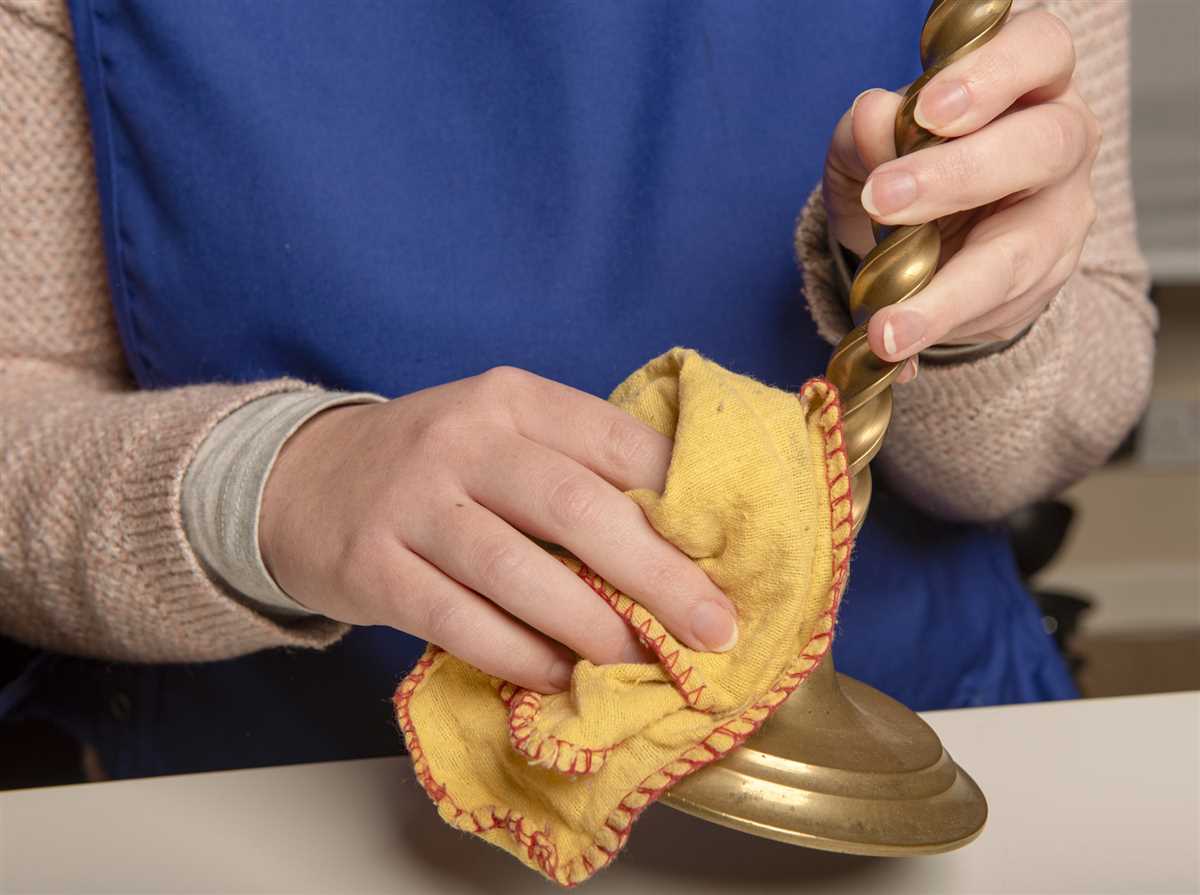
Brass items that are frequently touched, such as doorknobs, faucets, or cutlery, can harbor germs and bacteria. Regularly cleaning these items reduces the risk of spreading germs and improves overall hygiene in your home or workspace.
How to Clean Brass
To clean brass, there are several methods you can use depending on the level of tarnish and the item’s delicacy. Some popular methods include using a mixture of vinegar and salt, lemon juice and baking soda, or commercial brass cleaners. Always remember to test the cleaning method on a small, inconspicuous area before applying it to the entire brass item.
Use a soft cloth or brush to gently scrub the brass, and rinse it thoroughly with water after cleaning. Dry the brass with a clean, soft cloth to prevent water spots or stains.
In conclusion, cleaning brass is essential to maintain its appearance, prevent damage, preserve value, and improve hygiene. By following proper cleaning techniques, you can ensure that your brass items retain their beauty and last for generations.
Traditional Cleaning Methods
1. Lemon Juice and Salt:
One of the oldest and most effective methods for cleaning brass is using lemon juice and salt. The acid in lemon juice, combined with the abrasive texture of salt, helps to remove tarnish and restore the shine of the brass.
- Cut a lemon in half.
- Squeeze the juice of the lemon onto the brass surface.
- Sprinkle salt onto the lemon juice.
- Using a soft cloth or sponge, gently rub the salt and lemon juice mixture onto the brass, focusing on the tarnished areas.
- Rinse the brass thoroughly with clean water.
- Dry the brass with a clean cloth.
2. Vinegar and Salt:
Vinegar is another common household item that can be used to clean brass. When combined with salt, it creates a powerful cleaning solution that is effective in removing tarnish.
- Mix equal parts white vinegar and salt to create a paste.
- Apply the paste onto the brass surface.
- Using a soft cloth or sponge, gently rub the paste onto the brass, focusing on the tarnished areas.
- Rinse the brass thoroughly with clean water.
- Dry the brass with a clean cloth.
3. Baking Soda and Lemon:
Baking soda is also a great natural cleaner for brass. When combined with lemon juice, it can effectively remove tarnish and restore the shine of the brass.
- Mix equal parts baking soda and lemon juice to create a paste.
- Apply the paste onto the brass surface.
- Using a soft cloth or sponge, gently rub the paste onto the brass, focusing on the tarnished areas.
- Rinse the brass thoroughly with clean water.
- Dry the brass with a clean cloth.
4. Tomato Ketchup:
Believe it or not, tomato ketchup can also be used to clean brass. The acidity in the ketchup helps to dissolve tarnish and restore the shine of the brass.
- Apply a generous amount of tomato ketchup onto the brass surface.
- Using a soft cloth or sponge, gently rub the ketchup onto the brass, focusing on the tarnished areas.
- Let the ketchup sit on the brass for about 10 minutes.
- Rinse the brass thoroughly with clean water.
- Dry the brass with a clean cloth.
5. Commercial Brass Cleaners:
If you prefer to use a commercial brass cleaner, there are many options available in the market. These cleaners are specifically formulated to remove tarnish and restore the shine of brass.
Follow the instructions provided by the manufacturer on the packaging for the best results.
Modern Techniques for Cleaning Brass
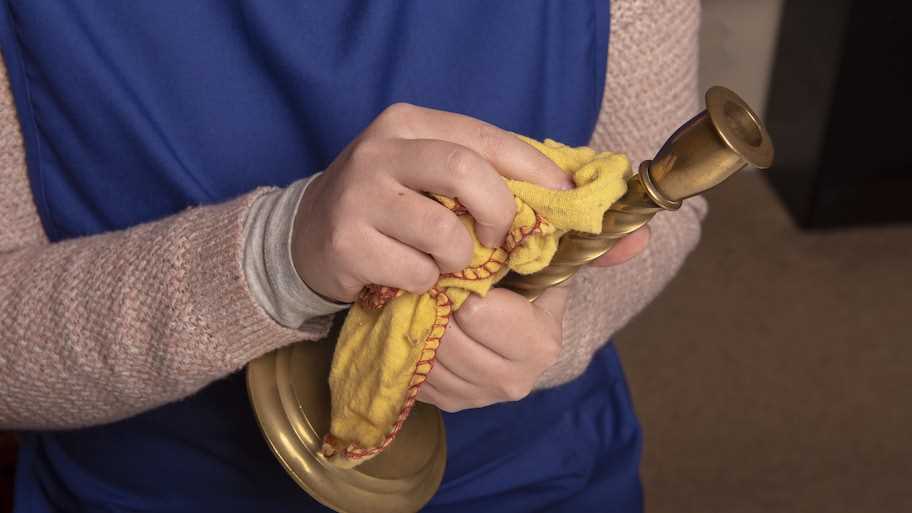
Brass is a beautiful metal that can add sophistication and elegance to any space. However, over time, brass can become tarnished and lose its shine. Cleaning brass requires careful techniques to avoid damaging the metal surface. Here are some modern methods to effectively clean brass:
1. Lemon Juice
Lemon juice is a natural acidic solution that can help remove tarnish from brass. Cut a lemon in half and squeeze out the juice into a bowl. Dip a soft cloth or sponge into the lemon juice and gently scrub the brass. Rinse the brass with water and dry it thoroughly with a clean cloth.
2. Vinegar and Salt
Vinegar and salt can create a cleaning solution that effectively removes tarnish from brass. Mix equal parts vinegar and salt to create a paste. Apply the paste onto the brass and let it sit for a few minutes. Gently scrub the brass with a soft cloth or sponge. Rinse the brass with water and dry it thoroughly.
3. Baking Soda
Baking soda is a gentle abrasive that can help remove tarnish from brass. Create a paste by mixing baking soda with water. Apply the paste onto the brass and let it sit for a few minutes. Gently scrub the brass with a soft cloth or sponge. Rinse the brass with water and dry it thoroughly.
4. Commercial Brass Cleaners
There are many commercial brass cleaners available on the market that can effectively clean tarnished brass. Follow the instructions on the product label and use the cleaner as directed. Be sure to rinse the brass thoroughly with water and dry it completely.
5. Preventive Measures

To keep your brass clean and shiny for longer periods, consider taking preventive measures. Apply a thin coat of clear lacquer or brass polish to protect the brass from tarnishing. Avoid exposing brass to excessive moisture or humidity, as these can accelerate tarnish formation.
Remember to always test any cleaning method or product on a small, inconspicuous area of the brass first to ensure that it does not cause any damage. With proper care and regular cleaning, your brass items can retain their beauty and shine for years to come.
Tips for Maintaining Brass
Brass is a beautiful metal that adds elegance and charm to any space. To keep your brass items looking their best, it’s important to properly maintain them. Here are some tips to help you care for your brass:
Cleaning
- Regularly dust your brass items with a soft, lint-free cloth to prevent the buildup of dirt and grime.
- For light cleaning, mix equal parts vinegar and water, dip a cloth into the solution, and gently rub the brass surface. Rinse with water and dry thoroughly.
- If your brass item is heavily tarnished, create a paste by mixing lemon juice and salt. Apply the paste to the tarnished areas, let it sit for a few minutes, scrub with a soft cloth or brush, rinse well, and dry completely.
- Avoid using abrasive cleaners or scouring pads on brass, as they can scratch the surface.
Polishing
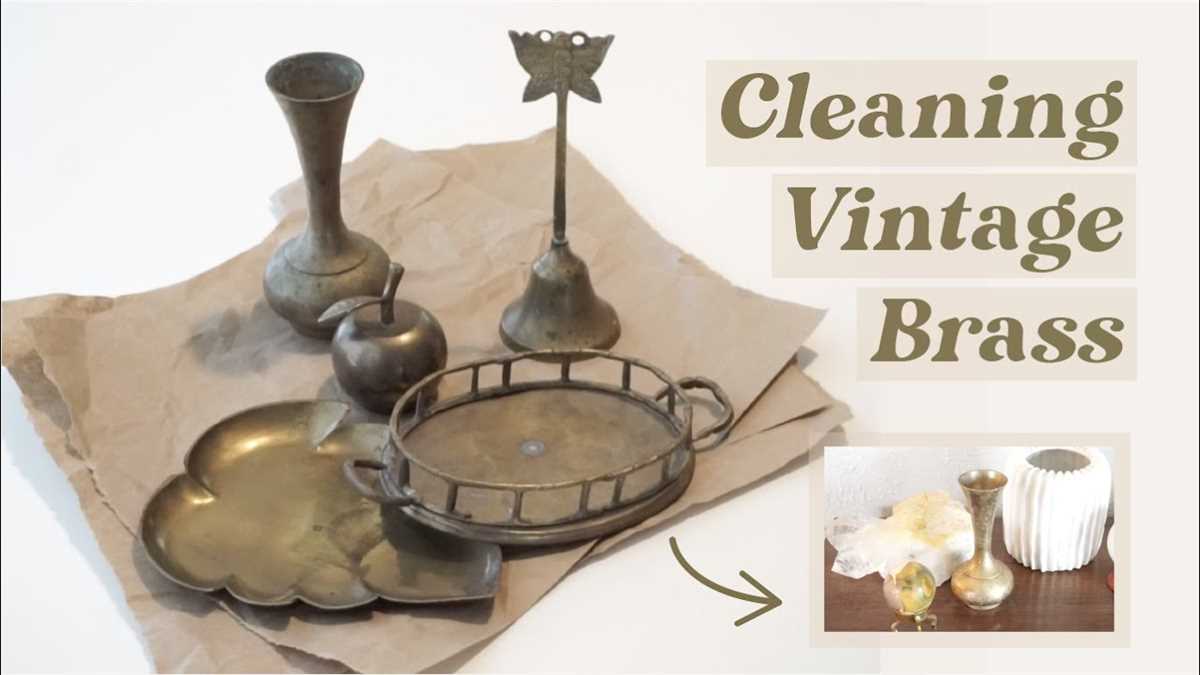
- Polish your brass items regularly to maintain their shine and luster.
- Use a commercial brass polish or make your own by mixing lemon juice and baking soda into a paste. Apply the polish to the brass surface, let it sit for a few minutes, and then buff with a clean, soft cloth.
- For intricate brass designs or hard-to-reach areas, use a soft toothbrush or cotton swab dipped in the polish.
- After polishing, rinse the brass item with water and dry thoroughly to prevent water spots.
Protection
- Avoid exposing your brass items to moisture, as it can cause tarnishing.
- Keep brass items away from direct sunlight, as prolonged exposure can fade the color.
- Consider placing a thin coat of clear lacquer on your brass items to protect them from tarnishing.
- If you display brass items, use a soft cloth or padding to prevent them from rubbing against each other and causing scratches.
By following these tips, you can ensure that your brass items remain beautiful and well-maintained for years to come.
FAQ
What are some easy techniques for cleaning brass?
There are several easy techniques for cleaning brass. One popular method is to create a paste using vinegar and flour, apply it to the brass, and then wipe it off with a soft cloth. Another method is to soak the brass in a mixture of lemon juice and salt, then scrub it with a brush. Alternatively, you can use a commercial brass cleaner for more stubborn stains.
Can I use household items to clean brass?
Yes, you can use household items to clean brass. As mentioned earlier, vinegar, flour, lemon juice, and salt are all effective in cleaning brass. You can also try using ketchup or Worcestershire sauce to remove tarnish from brass. Just make sure to test these household items on a small, inconspicuous area first to make sure they do not damage the brass.
What should I avoid when cleaning brass?
When cleaning brass, it is important to avoid using abrasive cleaners or scrubbing pads, as they can scratch the surface of the brass. You should also avoid using harsh chemicals or bleach, as they can tarnish or corrode the brass. Additionally, do not soak brass items with glued parts or non-brass elements, as the water can loosen or damage these components.
How often should I clean my brass items?
The frequency of cleaning brass items depends on several factors, such as the environment they are in and how often they are used. In general, it is a good idea to give your brass items a regular cleaning every few months to keep them looking their best. However, if the brass items are heavily tarnished or dirty, you may need to clean them more frequently.
What are some tips for maintaining the shine of brass?
To maintain the shine of brass, you can apply a thin layer of clear lacquer or wax after cleaning. This will help protect the brass from tarnishing and keep it looking shiny for longer. Additionally, you should avoid touching brass items with bare hands, as the natural oils from your skin can cause tarnish. It is also a good idea to store brass items in a dry, clean place to prevent moisture and dirt buildup.



